Want an Easy Tropical Oasis? Think Container Plants
I fell in love with beach cottages again on a recent trip to the northwestern coast of Florida. What struck me most about these charming homes was the care that each homeowner put into creating a welcoming entrance. Nearly every front porch had one — if not several — container gardens. I was in heaven! Tropicals and succulents were abundant in these containers, due to the heat and humidity in this area. Often they were used in ways or with plants I hadn't seen before. I usually find one or two container gardens to photograph on vacation, but the photos of plants on this trip may have actually outnumbered the photos of my family.
If you're interested in creating a lush tropical look for your outdoor environment, a tropical container garden could give it to you with minimal investment. Here's some inspiration for your own tropical oasis.
Get garden ideas for where you live
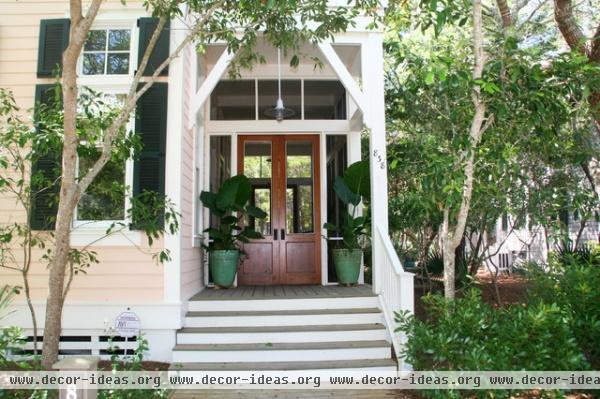
The area I visited falls within USDA zone 8B and enjoys very mild winters, so many plants that are considered annuals in other parts of the country are actually perennials here.
Elephant ears were common container garden additions. Elephant ears is actually the common name for plants in two different genera: Alocasia and Colocasia. Here's a simple way to figure which is which: If the giant ears point upward, the plant is likely in the genus Alocasia, like the plant on this porch. Elephant ears with leaves pointing downward are likely in the genus Colocasia.
Tip: Elephant ears look striking planted alone, but underplanting it with a trailing plant like the lavender verbena here provides a softer look.
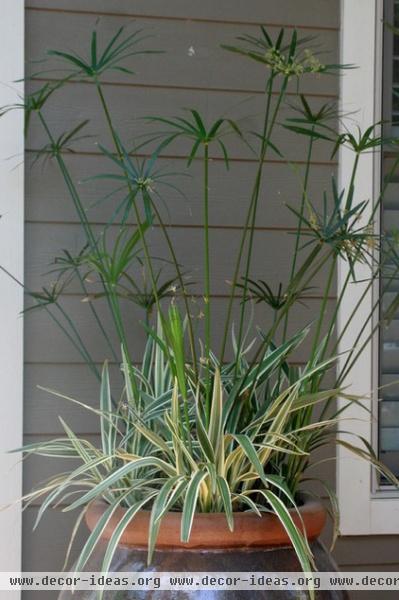
The architectural stems of papyrus (Cyperus) are topped by umbels of thread-like green "leaves." When grown as an annual in a pot, papyrus can grow 5 to 8 feet tall, making quite a statement.
Tip: Plant papyrus with simple plants — like the spider plant (Chlorophytum comosum) shown here — so you don't take away from the star of the show.
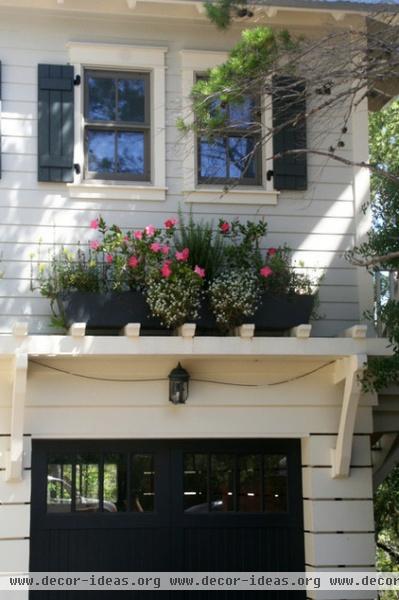
Even garages got the royal treatment! This window box is lushly planted with a mix of Mandevilla, rosemary, sweet alyssum and snapdragons.
Tip: If you're planting window boxes, you'll want to have either a wand attachment for your hose or windows that open nearby to make watering easier.
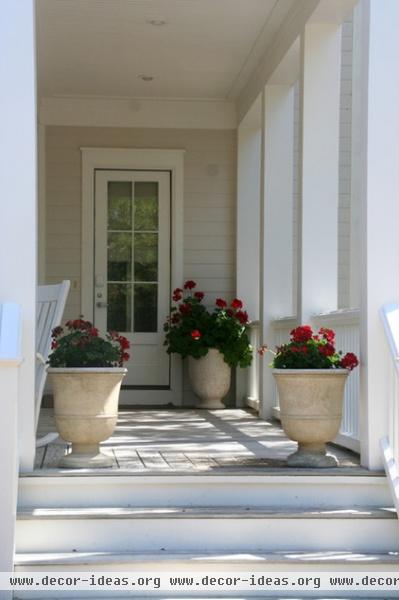
Some of the containers were designed simply, focusing on one variety of plant. These red geraniums stand out against the white porch, inviting you to come inside.
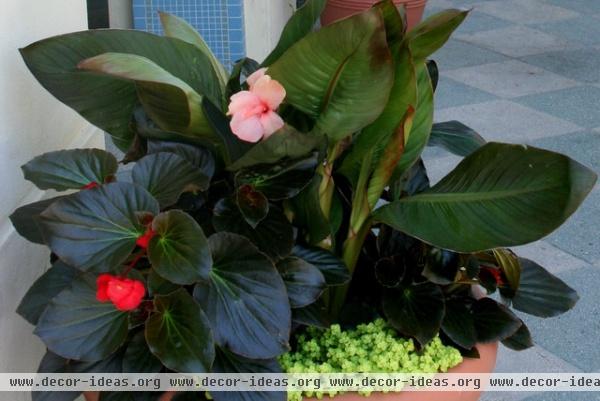
Tropical cannas, a personal favorite of mine, were planted extensively in gardens and porchfront containers in northwest Florida. I love the blush pink of the flowers mixed with the dark pink of the begonia and the chartreuse of 'Ogon' sedum in this container.
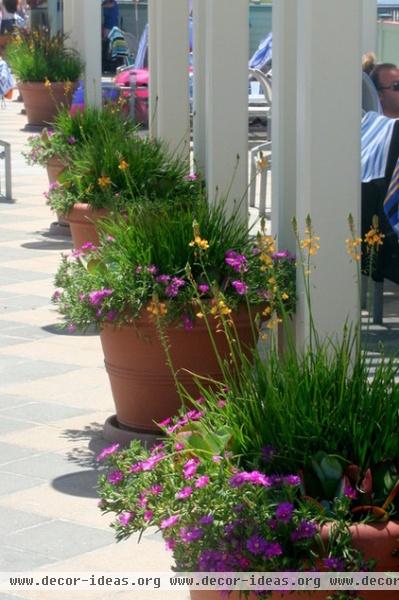
Succulents thrive in Florida's hot climate and likely can survive year-round. I often think of succulents as stand-alone plants, but this design shows how versatile they can be.
Tip: Try planting a Bulbine as the "thriller" plant of a container design, just like in this arrangement. Surround it with lower-growing succulents (you can see some paddle plants tucked amid the foliage) or drought-tolerant plants, such as the Delosperma spilling over the edge here.
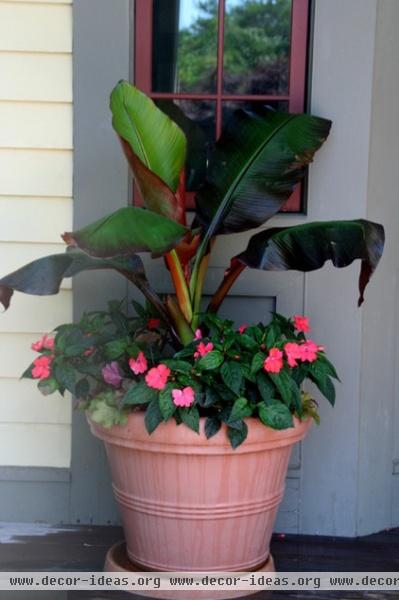
I noticed several banana plants (Ensete maurelii) grown as annuals in pots. The gorgeous dark red underside of the leaves pairs nicely with red flowers, such as these New Guinea impatiens. To me this vignette evokes a feeling of summer breezes in a tropical paradise.
Tip: Large banana leaves can break easily in high winds. Try these plants in a more sheltered area — maybe near a fence or wall that blocks heavy winds.
More: How to Grow Bananas
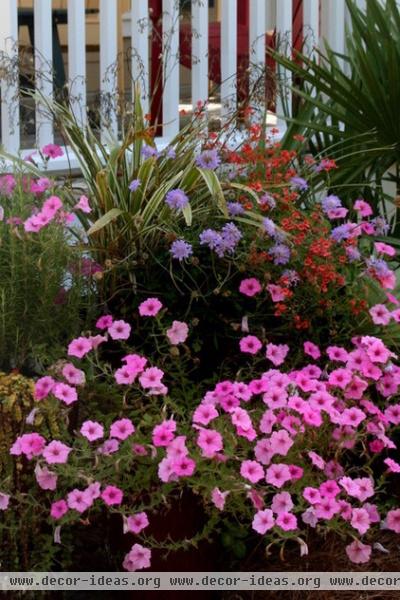
Other containers were riots of color, beckoning passersby to stop and take notice. These containers mixed petunias, society garlic, pincushion flowers and rosemary.
Tip: When planting a mixture, make sure the plants have the same moisture and sun requirements so they will all be happy and perform to their best ability.
Next:
Get inspired to hang some flower baskets
Ideas for what to do in your garden now












